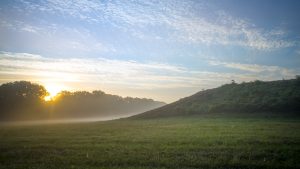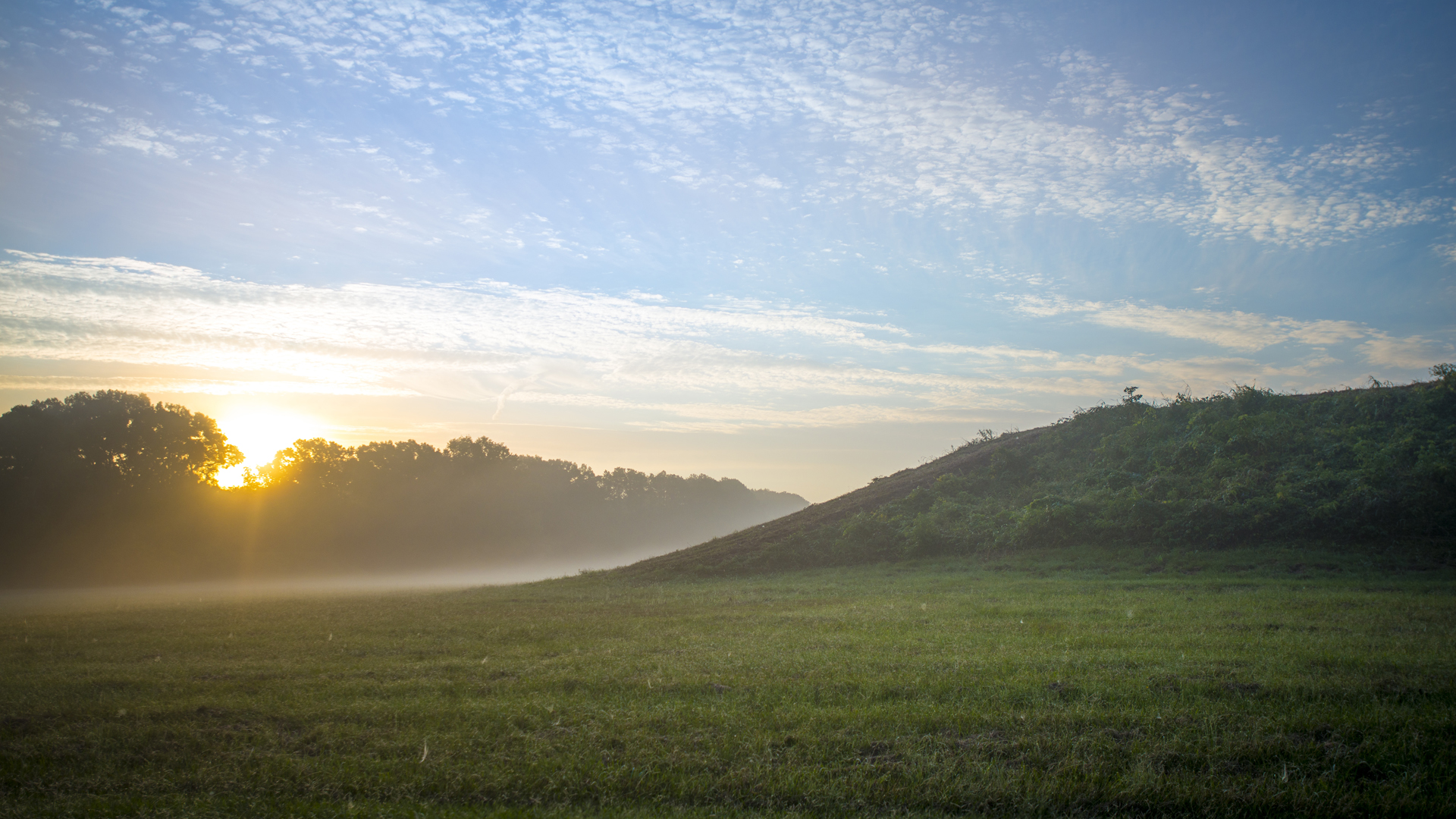
A new initiative launched by a team of University of Alabama cultural and research centers aims to showcase some of the most visible remains of the state of Alabama’s indigenous heritage.
The Alabama Indigenous Mound Trail celebrates the cultural heritage of the region through highlighting 13 archaeological sites that allow people to learn more about the depth of time and culture that began long before Alabama achieved statehood in 1819.
“While we’re expecting that the Alabama Indigenous Mound Trail program raises the awareness of all the different mound sites around the state, we also hope that it spurs conversations about the cultures that inhabited the region, well before Alabama established statehood,” said Brian Rushing, director of economic development Initiatives at UA’s Center for Economic Development, one of the program organizers.
The initiative provides an opportunity for Alabamians and out-of-state visitors to enhance their understanding and appreciation of the purpose, function and significance of the ancient indigenous mound centers located around the state.
The mound sites are scattered across Alabama and are either publicly accessible or have public parks nearby that offer opportunity to educate visitors about the site. The program highlights and celebrates Alabama’s ancient monumental architecture and includes information about each site via interpretive signage installed at each location, brochures available at tourism information centers, and information available on social media and online.
The sites include Florence Indian Mound (Florence), Oakville Indian Mounds (Oakville), The Hamilton Mounds Site (Hamilton), The Coker Ford Site (Cherokee Co.), The Choccolocco Creek Archaeological Complex (Oxford), The Bessemer Site (Bessemer), The Mound at Fort Toulouse-Fort Jackson Park (Wetumpka), The Mound at Old Cahawba Archaeological Park (Dallas Co.), The Bottle Creek Site (Mobile-Tensas Delta), The Fuller Site (Spanish Fort), Indian Shell Mound Park (Dauphin Island), Gulf State Park Sand and Shell Mounds (Gulf Shores), and the largest mound site in the region, Moundville Archaeological Park (Moundville).
The Alabama Indigenous Mound Trail is a joint effort of UA Museums and the UA Center for Economic Development. Staff from both those units are working in collaboration with the operators of each site, regional councils of government, 23 consulting federal tribes, Alabama Bicentennial Commission, and other partners to inform citizens and visitors of the rich indigenous cultures that populated Alabama for thousands of years predating statehood.
Site dedication events will occur around the state starting this fall and extending through 2019. For information about these events, visit the Alabama Indigenous Mound Trail Facebook page or alabamamoundtrail.org.
